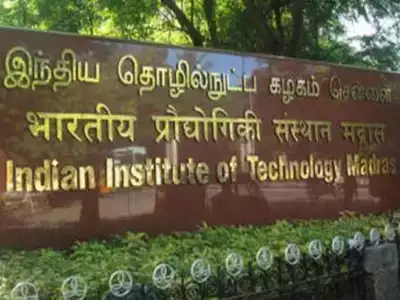Students are not free to select the their branch in IITs. The undergraduate (UG) programmes offered by IITs are also in danger. It is causing two connected symptoms: first, UG students at the most esteemed engineering colleges in the country are not becoming engineers, and second, their mental health is not at its finest.
Despite the complexity of the issue, allowing students to select their field of study after acceptance to the university would be a step in the right direction.
This would ensure that pupils truly love what they learn since they choose it after carefully weighing their options, replacing harsh external compulsion with internal desire. This might be preferable than the ordeal they endure for four years in a field they weren’t even knowledgeable enough about to select at the age of eighteen.
Students with more choice would be happier and more engaged in engineering. Then, they might be the representatives of the industrial society that the IITs were established to design.
The IITs have failed to address the crisis in their BTech programme because they were distracted by the day-to-day grind of teaching and research, may have been immobilised by a sense that the task is beyond their institutional powers, or were fooled into believing they had succeeded by the eye-catching salary checks of a small number of graduates who would have made it anyway. However, there are a number of barriers to increasing student autonomy that come from both parents and students.
Because “engineering” has long since been hollowed out at the UG level and has come to mean “general education” or “rigorous mental training” along with high academic prestige and the possibility of upward mobility, the students and their parents are optimistic about the non-engineering outcomes of the IITs. Although IITs’ highly regarded undergraduate programme does not yield many engineers, it does yield some winners in a culture where opportunities for success are severely limited. The youngsters and their guardians’ brains are focused on finishing this rat race.
Thus, “engineering” in India has come to represent what Greek and Latin represented in English and American higher education until the late 19th century: a technically challenging but essentially worthless skill that is valued as a sign of “being educated” and a qualification that grants access to the professions. Fundamentally, engineering is certainly not useless, but in India, for a variety of reasons, including our misguided industrial policy, the ease with which talent may be lost to the Anglosphere’s service sector, and the caste-based division of labour between manual and mental labour, engineering has been rendered useless.
The disheartening evidence of the IITs’ deteriorating undergraduate engineering programme is the low percentage of top engineering students nationwide who move on to pursue careers in engineering. In contrast, this is not the case in the US. According to data gathered by the US Department of Education, eighty-five percent of engineering bachelor’s degree holders go on to work in fields linked to their degrees.
For what reason is this the case? as Americans are free to select their branch of study only after being accepted into college, not before. Before choosing a “major,” UG students are allowed to take as many courses as they like for two of their four years. This, of course, guarantees a far better match between a student’s aptitude and areas of interest and their chosen branch or major. And this undoubtedly contributes to explaining why the US economy is inventive.
This aspect of American undergraduate education is prevalent in all universities, technical schools, and even high schools, although it is not highly recognised in India. As a result, you are not admitted to the computer science department at, say, MIT. You are able to select your major course of study after being accepted into MIT as a student. To dispel any notion that computer science is becoming more and more popular, MIT statistics indicates that just one in three undergraduates at the university chose the subject. With freedom of choice, students spread out over the institution and discover their own calling, which is why their employment are truly connected to their education rather than flocking into trendy majors.
However, one could legitimately contend that Indian 18-year-olds lack the maturity and freedom to explore their own interests and move beyond the expectations of their parents and society, particularly when the family’s future is at risk.
Paradoxically, this is precisely the same argument that was advanced in support of American UGs in discussions that introduced choice to the American system in the 19th century. The “elective system” critics claimed that American UGs were nothing like those that came out of the remarkable German Gymnasium high schools. As a result, in order to provide them with a comprehensive education in the “liberal arts” that would prepare them for any route in the future, they needed a rigorous curriculum centred on Greek, Latin, and the classics. These discussions gave rise to the unique American model of UG education, which combines major choice with a wide range of “general education” requirements.
It goes without saying that we must create our own system to meet our own needs and objectives. However, our implicit belief that our UGs can only act as a collective and not as individuals leads us to assume that, given the option, all of them will select Computer Science. This may be the case in India, but it’s also possible that UGs haven’t been provided with a secure environment in which they can initially grow into their unique selves.
It really hinders undergraduates’ capacity to make any independent decisions at all to continually denouncing them for receiving a choice-less education. However, the data reveals that the very thing that is pushing IIT students away from engineering and towards miserable marriages with occupations that are imposed from without is a lack of choice.
In order to fulfil their purpose and be beneficial to the taxpayers who support them, the IITs must encourage students to select their discipline of study after they are admitted, not before. With the launch of a small undergraduate programme that gives 30 students complete autonomy, IIT Bombay has taken a step in this direction. Due to their obsession with the rat race, most students are so risk-averse that they are unable to appreciate the importance of having the freedom to choose. To begin with, though, we are searching for a few outliers. Since attitudes are inherently sluggish to shift, IIT Bombay is taking its time granting its students the opportunity to make their own decisions.


































